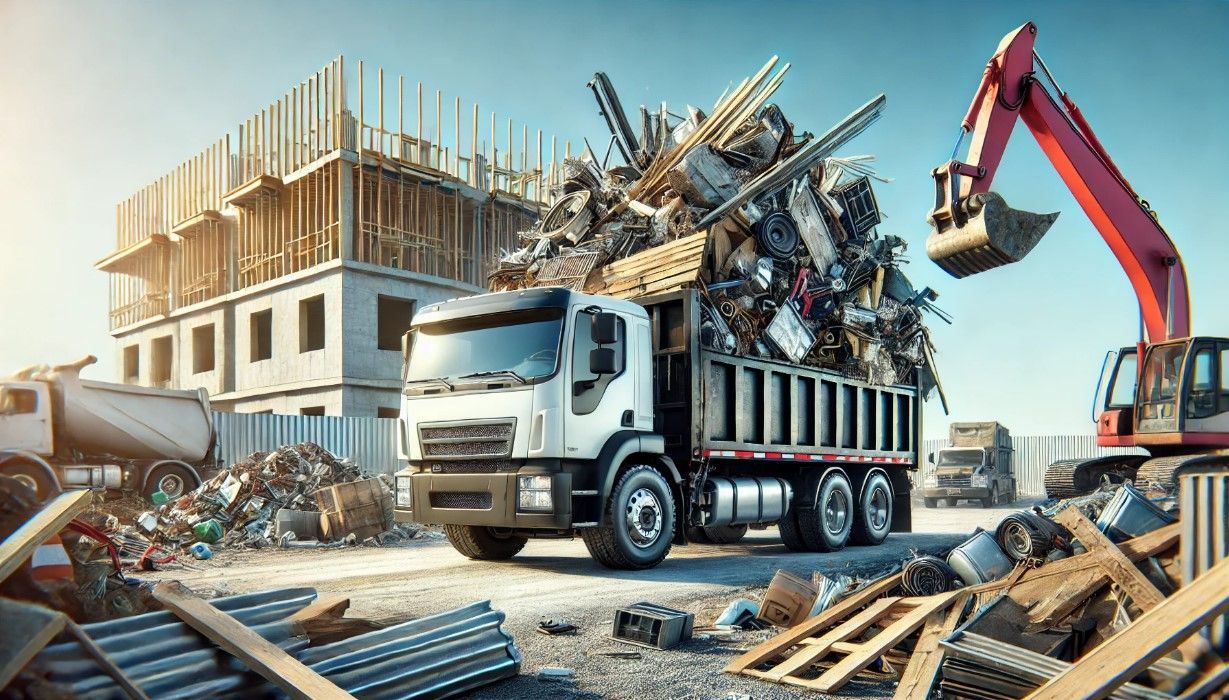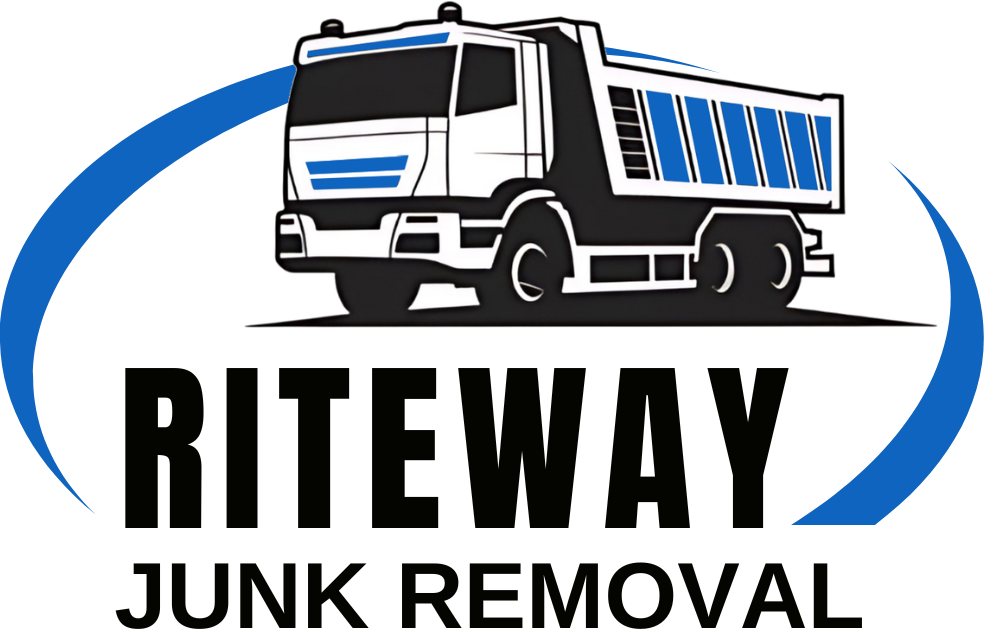Proudly Serving Elkhart, IN
ritewayservicesinc@gmail.com

Comprehensive Guide to Construction Debris Removal
Keeping a
construction site clean is no easy task. From broken concrete to drywall scraps, the mess piles up quickly. If you’ve ever been on a worksite, you know that construction debris can be a huge headache. But effective debris removal isn’t just about keeping things neat—it’s about safety, efficiency, and compliance. In this guide, we’ll cover how to manage construction waste, the best removal techniques, and ways to ensure your site stays clean and compliant with local regulations.
What is Construction Debris Removal?
Construction debris removal involves collecting, transporting, and disposing of materials like concrete, wood, drywall, and metals from construction sites. It’s a necessary step in every construction project, whether you’re building a new home, demolishing a building, or renovating a space.
Why Is It Important?
- Safety: A cluttered site can lead to accidents and injuries.
- Efficiency: Workers need a clear space to move and operate machinery.
- Environmental Impact: Proper waste management ensures harmful materials don’t end up in landfills.
- Compliance:
Local regulations often require proper disposal of construction debris.
Common Types of Construction Debris
| Debris Type | Description | Examples |
|---|---|---|
| Concrete & Asphalt | Heavy materials that need special handling | Sidewalks, driveways, old foundations |
| Wood | Often from framing, walls, or temporary structures | Lumber, plywood, treated wood |
| Drywall | Common in interior construction and renovation | Gypsum boards, wall panels |
| Metals | Often recyclable and valuable | Steel beams, pipes, wiring |
| Tiles & Ceramics | Breakable materials that require careful handling | Bathroom tiles, kitchen backsplash tiles |
| Hazardous Materials | Must be disposed of according to regulations | Asbestos, lead paint, solvents |
How to Remove Construction Debris: Step-by-Step Guide
1. Sort the Debris
- Start by separating recyclables from non-recyclables.
- Group materials like concrete, wood, metals, and hazardous waste.
- Sorting makes it easier to manage and transport the waste.
2. Rent a Dumpster or Bin
- Choose a bin size that fits the scale of your project.
- A larger dumpster is ideal for big demolition jobs, while a smaller one works for minor renovations.
- Ensure the bin is placed in a convenient spot for easy loading.
3. Load the Waste Safely
- Always use proper lifting techniques to avoid injury.
- Use wheelbarrows for heavier items like concrete.
- Keep hazardous materials in a separate, secure container.
4. Contact a Professional Junk Removal Service
- For large quantities of debris, it’s often best to call in professionals.
- They handle the transportation and disposal, ensuring compliance with local laws.
- A licensed junk removal service can also recycle materials, reducing your environmental impact.
5. Dispose of Hazardous Waste Properly
- Never mix hazardous materials with regular construction waste.
- Check local regulations for disposal sites or services that handle items like asbestos and lead paint.
- Improper disposal can result in hefty fines and environmental harm.
Tips for Efficient Construction Debris Removal
- Plan Ahead: Before starting your project, estimate the amount of waste you’ll produce. This helps you choose the right dumpster size and removal method.
- Use Recycling Centers: Many materials, such as metals and concrete, can be recycled. This not only saves space in landfills but can also reduce disposal costs.
- Work in Stages: Don’t wait until the end of the project to start cleaning. Remove debris as each phase of construction is completed to maintain a safer work environment.
- Hire a Waste Consultant: For large-scale projects, a waste management consultant can optimize your process, ensuring compliance and cost efficiency.
- Educate Your Team: Make sure everyone on the job site knows the plan for sorting and disposing of debris. Clear instructions can prevent mistakes.
FAQs About Construction Debris Removal
Q1: Can I mix different types of construction waste in the same dumpster?
A1: It depends on your local regulations. Many areas require hazardous materials to be separated from general waste. Always check with your local waste management authority.
Q2: What is the cost of hiring a professional junk removal service?
A2: Costs vary based on location, the amount of debris, and the type of waste. On average, prices range from $150 to $500. Get quotes from a few providers to compare.
Q3: How can I reduce the amount of debris on my construction site?
A3: Use efficient cutting techniques, reuse materials where possible, and plan your purchases to avoid over-ordering supplies. This minimizes waste from the start.
Q4: Are there penalties for improper disposal of construction debris?
A4: Yes, improper disposal can result in fines or legal action, especially for hazardous materials like asbestos. Always follow local guidelines.
Recycling and Disposal Methods for Different Types of Debris
| Material Type | Best Disposal Method | Environmental Benefit |
|---|---|---|
| Concrete | Recycle into gravel or road base | Reduces the need for new concrete production |
| Wood | Reuse in other projects or compost | Decomposes naturally, reducing landfill load |
| Metals | Send to scrap metal recycling centers | Saves energy compared to mining new metal |
| Drywall | Recycle where facilities exist, avoid sending to landfills | Reduces sulfur dioxide emissions |
| Hazardous Materials | Use specialized disposal facilities | Prevents soil and water contamination |
Key Benefits of Professional Junk Removal Services
- Time-Saving: Experts handle everything from collection to disposal, allowing you to focus on your project.
- Safety: Trained professionals know how to handle hazardous materials safely.
- Compliance: They stay up-to-date with local disposal regulations, ensuring you avoid fines.
- Environmentally Friendly: Many services prioritize recycling and responsible disposal, reducing the environmental impact.
Have you faced challenges with construction debris removal on your projects? What solutions worked best for you? Share your experiences in the comments below, and don’t forget to share this post with fellow contractors who might need these tips!
Regularly updating your construction debris removal process can keep your methods efficient and compliant with new regulations. It’s a good idea to review your waste management strategy at least annually and adjust based on local changes in disposal laws or recycling options.
Construction debris removal might seem like a daunting task, but with the right approach, you can keep your site safe, efficient, and environmentally friendly. By following the steps outlined here, you can make your next project smoother and less stressful. Remember, a clean site isn’t just about appearance; it’s about safety and success.
Need help with your construction debris removal? Contact us today for a free consultation and let us handle the heavy lifting so you can focus on building.
Contact us
If you have any questions or need any assistance after business hours, please get in touch.
ADDRESS
221 US Highway 20, Middlebury, Indiana 46540, United States
Phone
BUSINESS HOURS
- Mon - Sun
- -

We will get back to you as soon as possible.
Please try again later.
All Rights Reserved | Riteway Demolition
